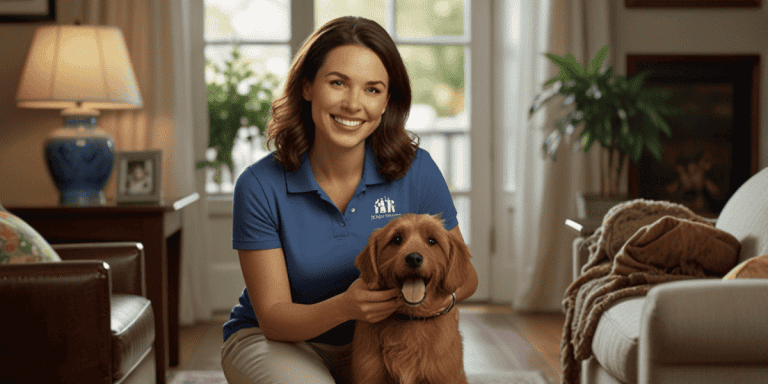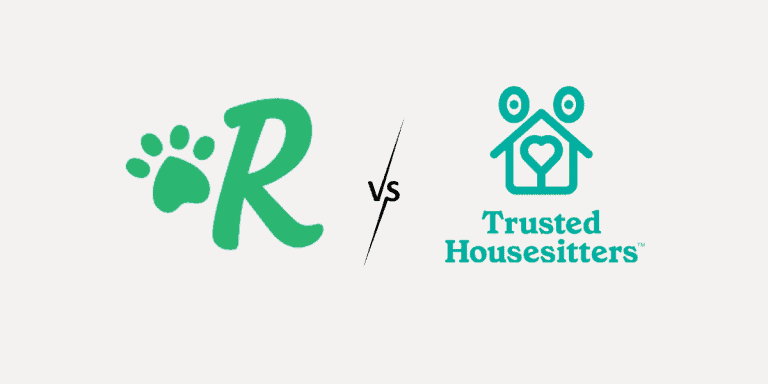How to Politely Decline a Pet Sitting Job (Without Burning Bridges)

As a pet sitter, you’re going to run into situations where you just have to say no. It’s not always easy, but knowing when and how to politely decline a booking is essential to maintaining a professional reputation and protecting your business.
Whether the timing clashes with another commitment, the pet’s behaviour exceeds your expertise, or you simply don’t feel the job is the right fit for you, saying no is sometimes necessary. But how do you do so in a way that feels professional, compassionate, and keeps the door open for future opportunities?
In this post, I’ll walk you through when to say no, how to say it kindly, and provide you with ready-to-use scripts that make the process smoother and less awkward.
Want to know more about the ins and outs of pet sitting in general? Check out this ultimate guide!
When Should You Say No to a Pet Sitting Job?
Knowing when to turn down a booking can be tricky, especially when you want to build a strong client base. However, protecting your time, energy, and reputation is key to creating a sustainable business that doesn’t burn you out. You’ll need to trust your instincts and consider what’s best for both you and the pet in question.
Here are some valid reasons to decline a job:
1. You’re Already Booked or Double-Booked
It’s perfectly reasonable to say no when you’re already committed. Double-booking can lead to stress and ultimately impact your ability to provide the best care for pets.
2. The Job is Outside Your Service Area
Travelling too far for a pet sitting job can eat into your time and reduce your availability for other bookings. If a job is outside your typical service area, it’s better to say no upfront rather than risk running into issues down the line.
3. The Pet’s Needs Exceed Your Experience
Some pets may have behavioural issues that you’re not equipped to handle. Whether it’s dealing with an aggressive dog or a cat with complex medical needs, you want to ensure the pet receives the best care possible. It’s okay to admit that a situation is beyond your experience.
4. Unrealistic Expectations from the Owner
If the pet owner’s expectations seem unreasonable — like asking for 24/7 care, expecting extra services without paying for them, or requesting last-minute changes — it’s okay to decline. Setting boundaries is important to ensure your business stays professional and profitable.
5. Poor Communication or Last-Minute Changes
If a client’s communication style is difficult or disorganised, it could signal future issues with bookings. Likewise, last-minute changes to the job or lack of preparation on the owner’s part may be a sign that the situation is not ideal.
6. You Simply Feel Uncomfortable After a Meet & Greet
Gut feelings are a powerful indicator. If, after meeting a pet or the owner, you feel uneasy or uncomfortable, it’s a good sign that the job might not be the right fit. Trusting your instincts can save you future stress.
One bad job can cost you more than just your time. Protect your reputation by knowing when to say no.
How to Decline a Pet Sitting Job Gracefully
The way you say no can be just as important as the reason. You want to maintain a positive relationship with the client, as they may consider you for future jobs or refer you to others.
✅ Step 1: Respond Promptly
Time is valuable, and leaving a potential client hanging for too long can give a bad impression. Responding promptly — ideally within 24 hours — ensures that the client knows you’re professional and reliable, even if the answer is no.
✅ Step 2: Be Honest, But Kind
Honesty is key, but it’s also important to remain tactful. You don’t have to go into too much detail, and you should avoid saying anything that could hurt the client’s feelings. Make the reason about you (e.g., your availability or expertise) rather than criticizing the pet or the owner.
✅ Step 3: Offer a Positive Ending
Ending the conversation on a positive note can leave the door open for future opportunities. You can suggest alternate dates, recommend another sitter, or simply express a desire to work with them in the future if circumstances change. This keeps your relationship cordial and professional.
Example Scripts for Saying No
Here are some polite and professional scripts to use in various scenarios:
❌ When You’re Already Booked
“Thanks so much for reaching out! I’m already fully booked for those dates, but I’d love to help another time if it fits. Feel free to check back with me for future bookings.”
This response acknowledges the request and leaves a positive impression without going into unnecessary detail.
❌ When the Pet’s Needs Exceed Your Experience
“I really appreciate the opportunity, but I don’t feel I’m the best fit for [pet’s name]’s specific needs. I want to make sure they get the best care possible, and in this case, I think someone with more specialised experience would be a better match.”
This keeps the focus on the pet’s well-being, showing that you have the animal’s best interests in mind.
❌ When the Client is a Bad Fit
“After giving it some thought, I don’t think I’m the right fit for this booking. I’m really grateful you considered me, and I hope you find someone amazing to care for [pet’s name]!”
A clear, but kind way to communicate that it’s simply not a good match.
❌ When You’re Not Taking New Clients
“Thanks so much for getting in touch. At the moment, I’m not taking on any new bookings, but I really appreciate the interest and wish you all the best finding the right sitter.”
This response gently explains that you’re not available for new clients, but leaves a door open for future opportunities.
Should You Recommend Someone Else?
You may feel inclined to recommend another sitter, but only do so if you genuinely trust the other sitter’s skills and professionalism. Referring someone unreliable could reflect poorly on you.
If you do recommend another sitter, try:
“I can’t help this time, but I recommend [Sitter’s Name] — they’re local and great with [type of pet]. Here’s their info if you’d like to check them out.”
If you don’t know anyone personally, be honest about it: “Unfortunately, I don’t have a specific recommendation, but I’m sure you’ll find someone wonderful. Best of luck!”
Conclusion
Saying no is a necessary part of running a professional and sustainable pet-sitting business. It’s not a sign of failure or rudeness — it’s a way to protect your time, your energy, and the well-being of the pets you care for.
Being clear, kind, and professional will build your reputation as a responsible and reliable pet sitter. Clients will respect you more for setting boundaries and being honest about your availability than they will for overcommitting and underdelivering.
So, practice your “no” now — so when you need it, you can say it with confidence and without the awkwardness.






